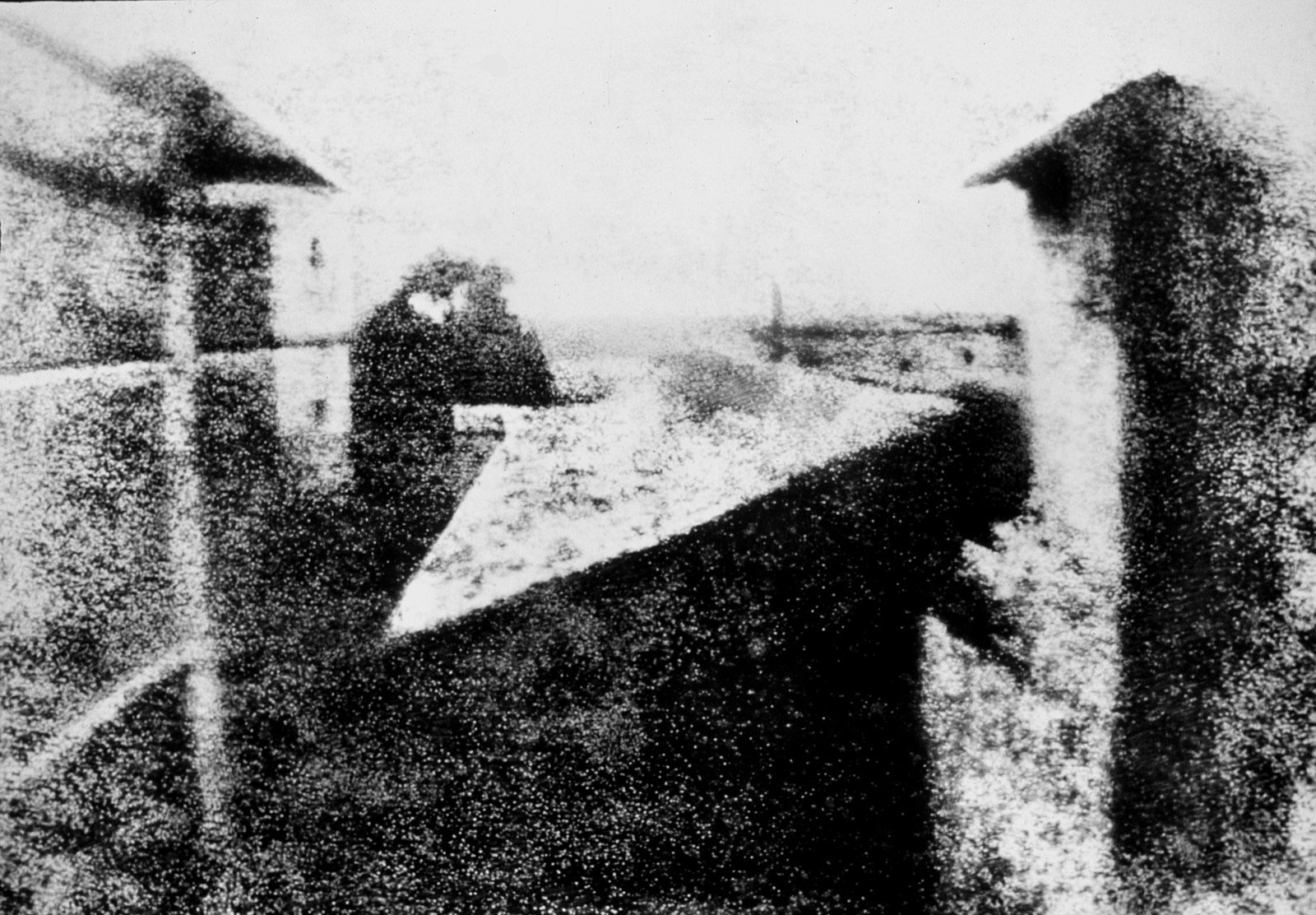Capturing Time: The Intriguing History of Photography and Its Impact on Our World
*Disclosure: This post may contain affiliate links that at no additional cost to you, I may earn a small commission.
Photography, an art form that has indelibly shaped the way we perceive and interpret the world around us, boasts a rich and fascinating history that spans over two centuries. The development of photography, driven by the relentless pursuit of innovation and the human desire to capture and preserve fleeting moments, has profoundly impacted our lives, transforming the way we communicate, document our experiences, and express ourselves artistically. This blog post delves into the captivating history of photography, tracing its origins from the earliest experiments of pioneers like Niepce and Daguerre to the digital revolution that has transformed the medium today. As we embark on this journey through time, we will explore the key milestones, innovations, and visionaries that have shaped the evolution of photography, revealing not only the technical advancements but also the cultural and artistic significance of this powerful medium. Join us as we uncover the fascinating story behind one of the most influential art forms in human history.
The Camera Obscura: The Ancestor of Modern Photography
The camera obscura, which translates to "dark chamber" in Latin, is an optical device that dates back as far as the 4th century BCE. It was first described by the Chinese philosopher Mozi and later explored by ancient Greek scholars such as Aristotle and Euclid. The camera obscura works on a simple principle: light passing through a small hole in the wall of a darkened room projects an inverted image of the outside scene onto the opposite wall.
Over the centuries, the camera obscura evolved into a portable device, often taking the form of a box or tent with a small aperture on one side and a translucent surface or mirror on the other to project the image right-side up. Artists, such as Leonardo da Vinci and Johannes Vermeer, used the camera obscura to study perspective and create accurate drawings and paintings. This early fascination with capturing images paved the way for the invention of photography.
During the Renaissance and the Baroque period, the camera obscura became an essential tool for artists and scientists alike, playing a significant role in the study of optics, light, and color. The device's popularity continued to grow in the 18th and 19th centuries, with inventors and photographers experimenting with ways to capture and preserve the fleeting images produced by the camera obscura. This pursuit of a permanent record of the projected images led to the development of the first photographic processes, marking the beginning of photography as we know it today.
The Birth of Photography: The First Permanent Images
In the early 19th century, various inventors and experimenters sought ways to capture and preserve the images projected by the camera obscura. Among them, two pioneers stand out: Joseph Nicéphore Niépce and Louis Daguerre.
Niépce, a French inventor, was the first person to successfully create a permanent photographic image. In 1826, he used a technique called heliography (drawing with the sun) to capture an image of the view from his studio window. Niépce coated a pewter plate with a light-sensitive substance called bitumen of Judea, which hardened when exposed to light. After an exposure time of several hours, the unhardened bitumen was washed away, leaving behind a permanent image etched onto the plate. This first photograph, known as "View from the Window at Le Gras," is a milestone in the history of photography.
Louis Daguerre, a French artist and inventor, collaborated with Niépce to improve the photographic process. After Niépce's death in 1833, Daguerre continued experimenting and eventually developed the daguerreotype process. This technique involved exposing a polished silver-plated sheet of copper coated with silver iodide to light inside a camera obscura. The image was then developed using mercury vapor and fixed with a solution of sodium thiosulfate or common salt. The result was a highly detailed, one-of-a-kind photograph.
Daguerre's invention was announced to the world in 1839, marking the beginning of the photographic era. The daguerreotype process was met with great enthusiasm, and soon people all over the world were capturing images of their surroundings, loved ones, and significant events. The invention of photography had begun to revolutionize the way we document and understand our world.
The Evolution of Photography: From Wet Plate to Dry Plate
The daguerreotype process had its limitations, as it produced unique, non-reproducible images and was quite expensive. As a result, inventors sought ways to create more accessible and affordable photographic processes. This led to the development of new techniques like the wet plate collodion process and, later, the dry plate process.
The wet plate collodion process, invented by Englishman Frederick Scott Archer in 1851, involved coating a glass plate with a mixture of collodion (a flammable, syrupy solution) and light-sensitive chemicals, then immersing the plate in a silver nitrate solution to make it light-sensitive. The plate had to be exposed while still wet and then developed immediately after exposure. This process was less expensive and time-consuming than the daguerreotype, and it allowed for the creation of multiple copies of a single image through the use of a negative-positive process. The wet plate collodion process became the dominant photographic method throughout the 1850s and 1860s.
However, the wet plate process had its drawbacks, as the glass plates were heavy, fragile, and required a portable darkroom for on-location photography. In response to these challenges, inventors worked to develop the dry plate process, which involved using gelatin instead of collodion as a binder for light-sensitive chemicals. English physician Richard Leach Maddox is credited with inventing the dry plate process in 1871.
The dry plate process had several advantages over the wet plate technique. Photographers no longer needed to carry a portable darkroom, as the plates could be prepared in advance and developed later. This made photography more accessible to a wider range of people and facilitated the growth of the medium as an art form and means of documentation. The dry plate process also allowed for shorter exposure times, paving the way for the development of handheld cameras and the birth of snapshot photography.
The Rise of Film Photography and Kodak's Impact
The dry plate process marked a significant step towards more accessible photography, but the invention of flexible film by George Eastman truly revolutionized the field. Eastman, an American entrepreneur, developed a method for producing photographic film by coating a flexible roll of cellulose nitrate with a light-sensitive emulsion. This breakthrough laid the groundwork for the future of film photography.
In 1888, Eastman introduced the first Kodak camera, a simple and affordable box camera preloaded with a roll of film. This user-friendly camera had the slogan, "You press the button, we do the rest," highlighting the ease of use for amateur photographers. Users could simply take photographs, send the camera back to the Kodak factory for film processing, and receive their developed prints along with a reloaded camera.
Kodak's introduction of the Brownie camera in 1900 further democratized photography by offering an even more affordable option for the masses. The Brownie was a simple cardboard box camera that used roll film and cost only $1, making photography accessible to a much broader audience. This era marked a turning point in the history of photography, as it shifted from a specialized, expensive process to a more widely available and affordable hobby.
The popularity of film photography continued to grow throughout the 20th century, with advancements in camera technology, film processing, and printing methods. The rise of 35mm film, first introduced by Oskar Barnack in the Leica camera in the 1920s, contributed significantly to the popularity of film photography, as it provided a compact, high-quality option for both amateur and professional photographers. Film photography remained the dominant medium until the emergence of digital photography in the late 20th and early 21st centuries.
The Advent of Digital Photography and its Rapid Evolution
The seeds of digital photography were sown in the 1960s when researchers at NASA began to explore electronic imaging techniques to capture and transmit images from space. However, it wasn't until 1975 that the first digital camera prototype, the Kodak digital camera, was invented by Steven Sasson, an engineer at Eastman Kodak. This groundbreaking device used a charge-coupled device (CCD) to convert light into an electrical signal, which was then stored on a digital cassette tape. Although the images captured by Sasson's camera were rudimentary by today's standards, this invention marked the beginning of a new era in photography.
The 1980s and 1990s saw significant advancements in digital camera technology. In 1986, Canon introduced the first digital still video camera, the RC-701, which recorded images onto video cassettes. The following decade saw the rise of consumer digital cameras, with companies like Kodak, Nikon, and Sony releasing increasingly affordable and user-friendly models.
One of the major catalysts for the rapid adoption of digital photography was the development of the World Wide Web in the 1990s. The ability to share and store images digitally, combined with the increasing availability of high-quality digital cameras, led to an explosive growth in the popularity of digital photography.
Today, digital photography has become the dominant medium, with smartphone cameras continually improving and professional-grade digital cameras offering incredible image quality and versatility. The evolution of digital photography has not only transformed the way we capture and share images but has also impacted the world of film photography, pushing it into the realm of niche-interest and artistic pursuit (although rapidly growing in popularity again).
Nevertheless, the history of photography is a testament to the resilience of the medium, as it continues to evolve and adapt to new technologies and artistic expressions. From its humble beginnings as a scientific curiosity to its current status as a ubiquitous, ever-present aspect of our daily lives, photography has come a long way and will undoubtedly continue to shape and be shaped by human creativity and innovation.
Conclusion
In conclusion, the history of photography is a fascinating journey that reveals the evolution of this incredible medium and its profound impact on our lives. From the early experiments of Niepce and Daguerre to the innovative works of Talbot and Eastman, the foundations of photography were built upon the relentless pursuit of knowledge and creativity. As we progressed into the 20th century, the introduction of color photography and the popularization of instant film brought about new dimensions to the art, allowing it to permeate every aspect of our lives.
The advent of digital photography marked a significant turning point, revolutionizing the way we create, share, and consume images. This rapid evolution has made photography more accessible than ever before, providing us with powerful tools to express ourselves, document our experiences, and connect with others around the world.
Despite the ever-changing landscape of photography and the constant introduction of new technologies, the essence of this art form remains the same: to capture a moment in time and tell a story through visual imagery. The history of photography reminds us that, at its core, photography is a reflection of human curiosity, ingenuity, and the innate desire to connect with others. As we continue to explore new frontiers in photographic technology and artistic expression, it is essential to remember and celebrate the rich history that has shaped this captivating medium, as it fuels our ongoing passion for photography and its endless potential.
Everything you need to get started with 35mm film:
Cameras - eBay
Film - Amazon
Cinestill CS41 Developing Kit - Amazon
Epson V600 Flatbed Scanner - Amazon







